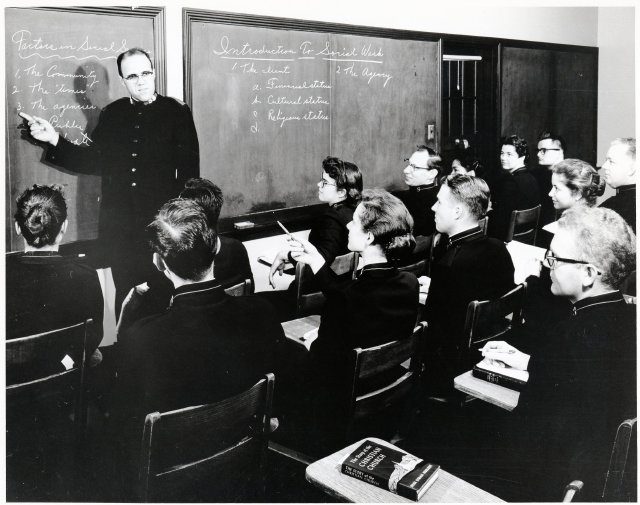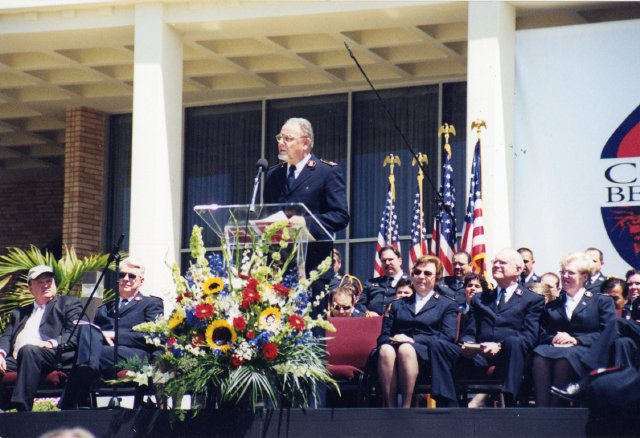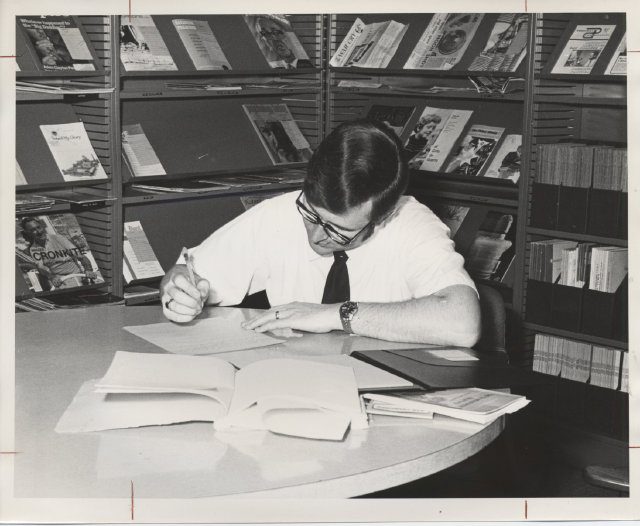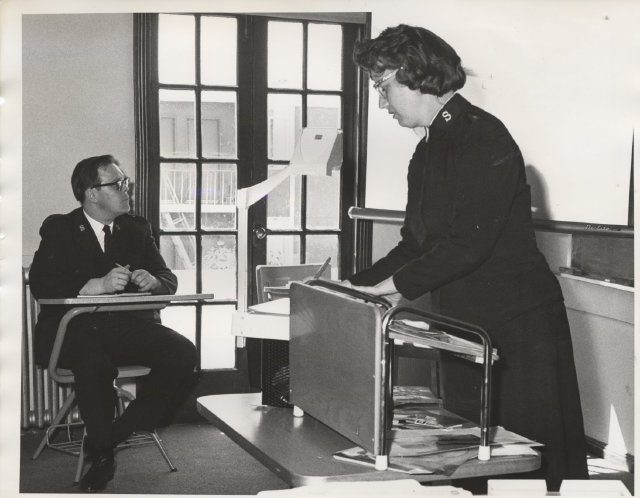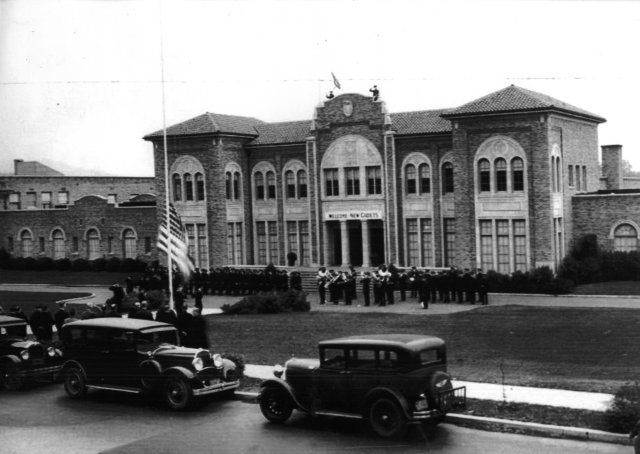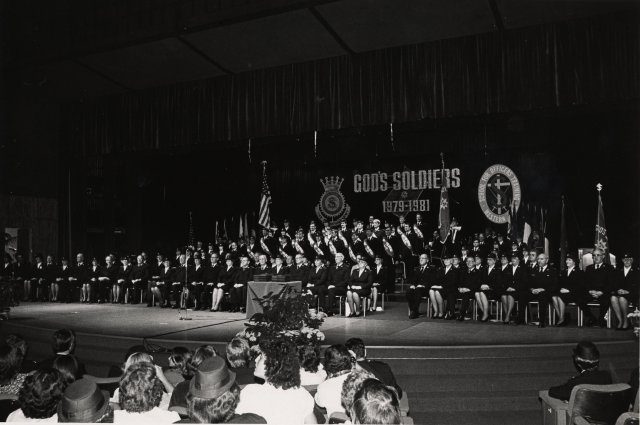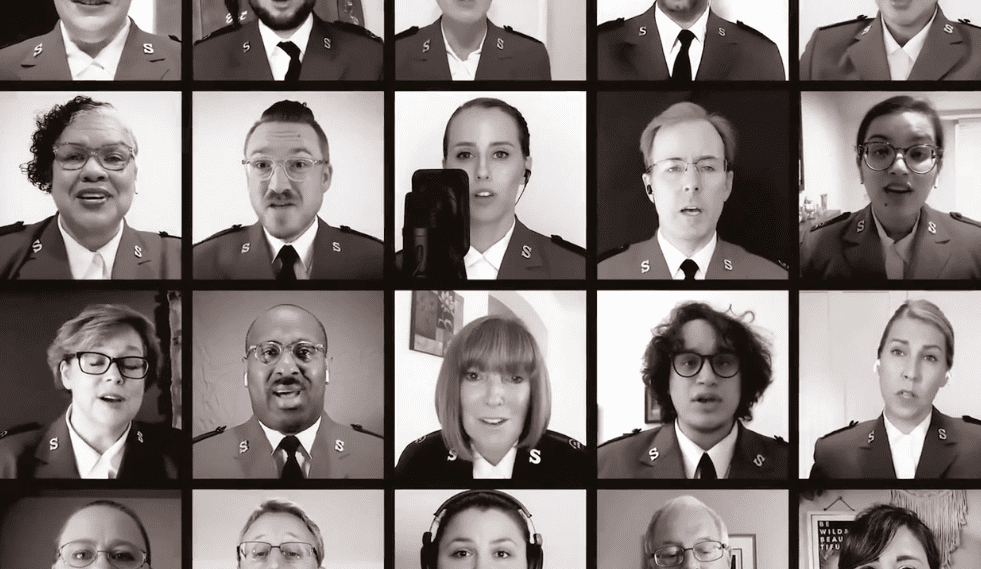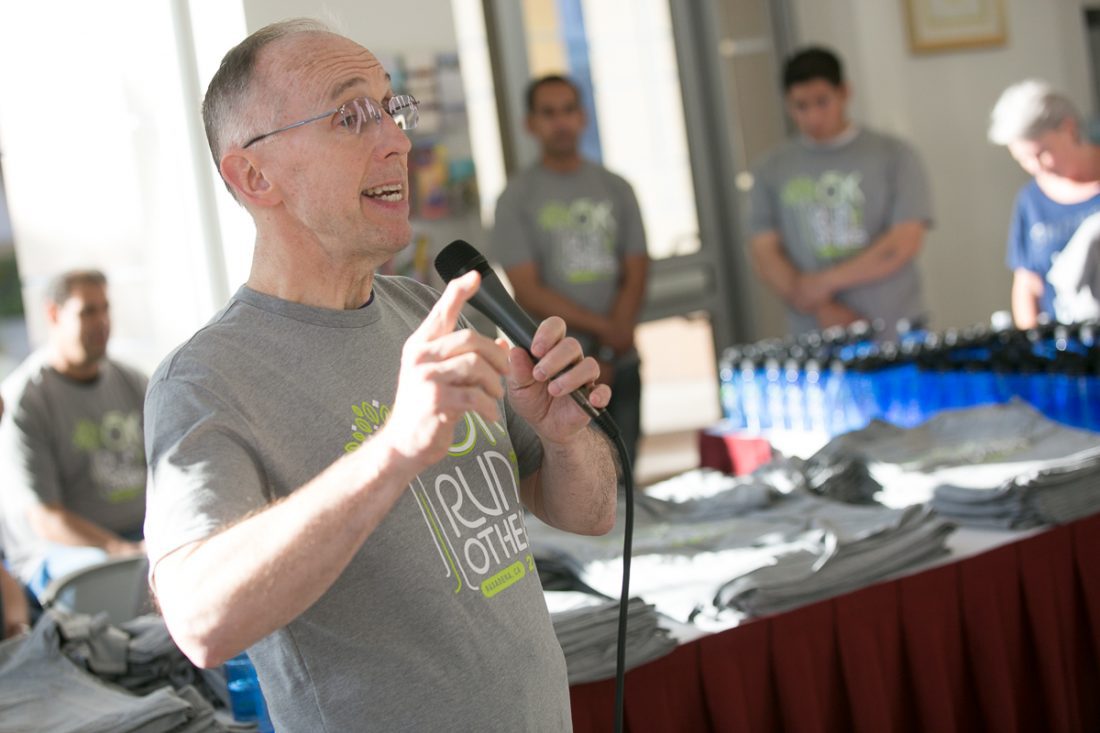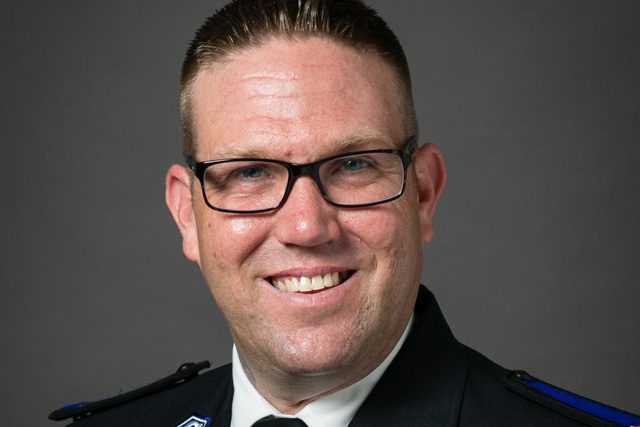By Clinton Trimmer, Captain–
The Western Territory’s College for Officer Training came into being 100 years ago, in 1920, coinciding with the creation of the territory itself. Over the next century, much about training changed, but the essential goal remained the same: to prepare Salvation Army officers for God’s service.
“The milestone of 100 years provides an opportunity to reflect on our legacy and the faithfulness of God in leading his people to establish a training institution where cadets receive relevant equipping for effective ministry,” said Major Nigel Cross, current Training Principal.
115 Valencia Street, San Francisco
In the fall of 1920, a group of young men and women arrived in San Francisco to begin their nine-month training period. This first Pioneer Session of cadets came from locations throughout the new territory, including New Mexico, California, Washington and Hawaii. Twenty-one new cadets made it to the first-ever commissioning in the Western Territory the following spring in 1921.
Before the creation of the Western Territory in 1920, The Salvation Army in this part of the United States was part of an administrative unit called The Department of the West, with all officer training held in Chicago. The formation of the Western Territory allowed the establishment of a new training school, independent from the one in Chicago. This first school occupied the top two floors of The Salvation Army’s building at 115 Valencia Street in San Francisco, above the San Francisco Citadel Corps. The building served the purpose temporarily, but with the rapid growth of The Salvation Army in the West, more space was needed to train cadets.
The Army’s plan was to build a purpose-specific facility able to accommodate larger sessions. Then Territorial Commander Lt. Commissioner Adam Gifford dreamed of a school capable of training 170 cadets, impossible in the original building.
Silver Avenue, San Francisco
Beginning with the 1928-29 Centenary Session—commemorating 100 years since the birth of William Booth—the territory started training in a new school located on Silver Avenue. This new facility featured separate dorms for men and women with the latest amenities, and over 26 lavatories. Each cadet was assigned a separate room with a radiator and sinks providing hot and cold running water. For its time, the school was considered luxurious and was certainly more comfortable than the prior facility.
The comfort, however, did not mean that regulations became lax. Men and women cadets ate in separate dining rooms supplied by a shared kitchen. Communication between male and female cadets had to be approved by training school staff. Cadets were expected to wear a uniform while washing windows and performing other house duties. The goal was to train the mind and prepare the cadets for the regimented life of a Salvation Army officer.
“The time devoted to training is an infusion of information aimed at getting a cadet to the starting line,” said Lt. Colonel Tim Foley, former Training Principal. “It’s not the end all, as the wise officer spends their entire lifetime having a teachable spirit with much more to learn than the training program could ever offer. “
On Sept. 29, 1929, less than one year after the Silver Avenue property’s dedication by National Commander Evangeline Booth, the New York Stock Market crashed, setting off a series of events culminating in the Great Depression.
Although The Salvation Army in the West did not immediately feel its effects, the Great Depression would lead to the reclaiming of the Silver Avenue training school in 1935 by the bondholders who had loaned the money for the building’s construction. The territory never reached the dream of 170 cadets per session. Another effect of the Great Depression was that no cadets arrived for training in fall 1932—The Salvation Army had canceled the 1933 session. Undaunted by the Silver Avenue property’s loss, the training school asked the 1936 World For God Session to report to 101 Valencia Street to begin training.
101 Valencia Street, San Francisco
The move to the 101 Valencia Street building put the training school directly over Territorial Headquarters (THQ) and into more restrictive space than ever before. Because of this, only female cadets boarded at the training school, while the men lodged above the Market Street Corps less than a mile away.
According to Cadet Wilma Cherry—later Commissioner Wilma Smith—the separate living quarters offered at least one advantage. The female cadets were able to negotiate some sewing of the men’s socks or uniform items in exchange for the men sneaking in pastries, which they purchased from the bakery between the training school and the Market Street Corps. In addition to strict regulations preventing the women from going to the bakery on school days, cadets were required to wear uniforms on days off, even when away from the training school.
The school would remain with this split housing arrangement and cramped conditions until 1948 when the Dauntless Evangelists Session would be the first to train at 1450 Laguna Street, San Francisco.
Laguna Street, San Francisco
The Laguna Street property was first home to The Salvation Army Japanese Division and Japanese Orphanage. The building fell out of use when executive order 9066 issued in February 1942 by the U.S. government authorized the military to intern anyone they deemed an enemy alien, including Americans of Japanese ancestry. Following World War II and the end of Japanese internment, it was clear that the Japanese Division was not coming back, nor would the Japanese orphanage return to San Francisco. The Salvation Army decided the property would work well as a training school, hence the move there in 1948.
The new facility allowed the school to expand beyond the restrictive one floor it had been occupying. Soon, new dormitories were under construction, which included rooms designed to accommodate married cadets. In addition, it was here, for the first time, that children were allowed to go to training school with their parents.
In 1960 another significant change occurred with the arrival of the Soldiers of Christ Session, who were the first to receive the current length of 22 months of training. Previously, training had only been nine months, and just one session had attended the training school per year. With the 22-month training period, sister sessions now trained at the same time. Because of this transition, the territory had no commissioning in 1961.
Crestmont, Rancho Palos Verdes
As the 1960s gave way to the 1970s, California’s population center was shifting southward, with Los Angeles becoming the first city of the West. This demographic shift, along with concerns over the safety of some of San Francisco’s neighborhoods, prompted The Salvation Army to look for a new property in Southern California. They found a relatively secluded school for sale at the end of Hawthorne Boulevard in Rancho Palos Verdes. In 1975, for its summer assignment, the Overcomers Session moved the training school to its current location on the Crestmont campus.
With the move south, the training school found itself again sharing property with THQ. Still, the property was well suited for a school and was adapted to accommodate THQ. The new location also took the training school out of an urban center and into a suburban setting, with more trees, lawns and natural vistas than in San Francisco. Unlike the area surrounding the school today, in 1975 the peninsula was still sparsely populated.
“Training is ‘sacred space.’ More than academics or field experience, training is about drawing closer to God,” said Major Brian Saunders, former Training Principal. “It’s about making time and space to become the person that God envisions for you. It’s about letting go of one’s self—and embracing all that God means you to be.”
The more massive campus and spacious grounds also permitted the Army to have expanded facilities for children. Whereas families were once relatively rare at the training school, they were becoming more commonplace with the acceptance of older cadets. Previously, in the 1920s-30s sessions, someone aged 24 was considered too old for training. In the 1970s and 80s, the average age within sessions increased from the late 20s to the mid-30s. More cadets were coming to training later in life, after having worked and established families, instead of immediately following high school.
The higher average age meant that cadets brought more prolific experiences and abilities to training. The curriculum also continued to change. With the growth of professionalism and higher education seen in the 1980s, the school kept pace by introducing a comprehensive array of subject matter, resulting in a more academic approach to training than earlier generations of cadets had experienced. In 1985 the training school was awarded accreditation, allowing an Associate of Arts in Ministry to be conferred upon graduating cadets.
“It is really a joy to work with cadets because their excitement, creativity and passion for ministry is so encouraging and invigorating,” said Lt. Colonel Steve Smith, former Training Principal. “To know that you get to play even a small role in developing future leaders is a real blessing.”
A new century
The 21st century brought more change when THQ moved to the City of Long Beach (California), leaving the Crestmont campus entirely to the training school. It was not long before the new space was utilized to expand Crestmont College programming. The college was home not only to the training school but also a short-lived residential leadership development program entitled “Leads,” and the opportunity to pursue a bachelor’s degree on campus. Although the bachelor’s program ultimately did not come to fruition and the Leads program did not continue, the training school retained its name—the College for Officer Training—a name it still holds today.
The training school has undergone several name changes. Initially listed as The Salvation Army School for Officers’ Training, it became the College for Officer Training in 1993. In 1999, it switched to Crestmont College until the current name, The Salvation Army College for Officer Training was adopted in 2003.
The return of THQ in 2018 resulted in a campus-wide remodel of all administrative and educational buildings, modernizing the training facilities in the Western Territory. Today, the training school continues to innovate with different ways of preparing cadets for officership. Recently, the school adopted online learning techniques to facilitate instruction from off-campus faculty members and to continue training cadets during the COVID-19 pandemic.
While techniques have changed and cadet life experience has altered, the college continues the legacy of past generations. The College for Officer Training upholds the tradition begun by the Pioneer Session 100 years ago, preparing men and women to be Salvation Army officers in the Western Territory.
“The Salvation Army has and will continue to commit resources to provide attractive facilities, necessary equipment and modern technology, resources to improve the quality of cadets’ physical and emotional health, and resources to maintain a standard of excellence—all while nurturing the essential spiritual development of its cadets,” said Lt. Colonel Doug O’Brien, former Training Principal.
Training School Principals
Colonel Andrew Crawford 1920-1925
Colonel George H. Davis 1925-1928
Lt. Colonel Clarence R. Boyd 1928-1930
Colonel William Sansom 1930-1935
Lt. Colonel Arthur Hopkins 1935-1941
Colonel Frank L. Wilmer 1941-1945
Lt. Colonel Reginald Martin 1943-1953
Lt. Colonel Richard B. Fitton 1953-1957
Colonel Harry L. Larsen 1957-1967
Lt. Colonel Victor Newbould 1967-1971
Brigadier Williard S. Evans 1971-1975
Major Kenneth L. Hodder 1975-1979
Major Ronald G. Irwin 1979-1981
Lt. Colonel R. Eugene Rice 1981-1983
Major Harold J. Anderson 1983-1986
Lt. Colonel Peter Chang 1986-1990
Lt. Colonel Bill Luttrell 1990-1994
Major Terry W. Griffin 1994-1998
Lt. Colonel Douglas O’Brien 1998-2002
Lt. Colonel Raymond Peacock 2002-2004
Major Donald Hostetler 2004-2008
Major Stephen Smith 2008 -2011
Major Tim Foley 2011-2015
Major Brian Saunders 2015-2020
Major Nigel Cross 2020-Present











